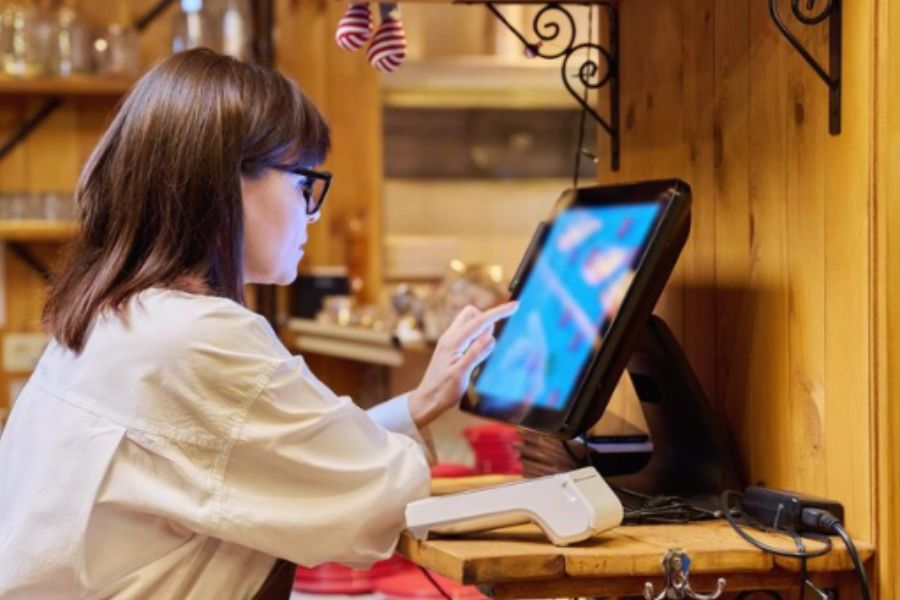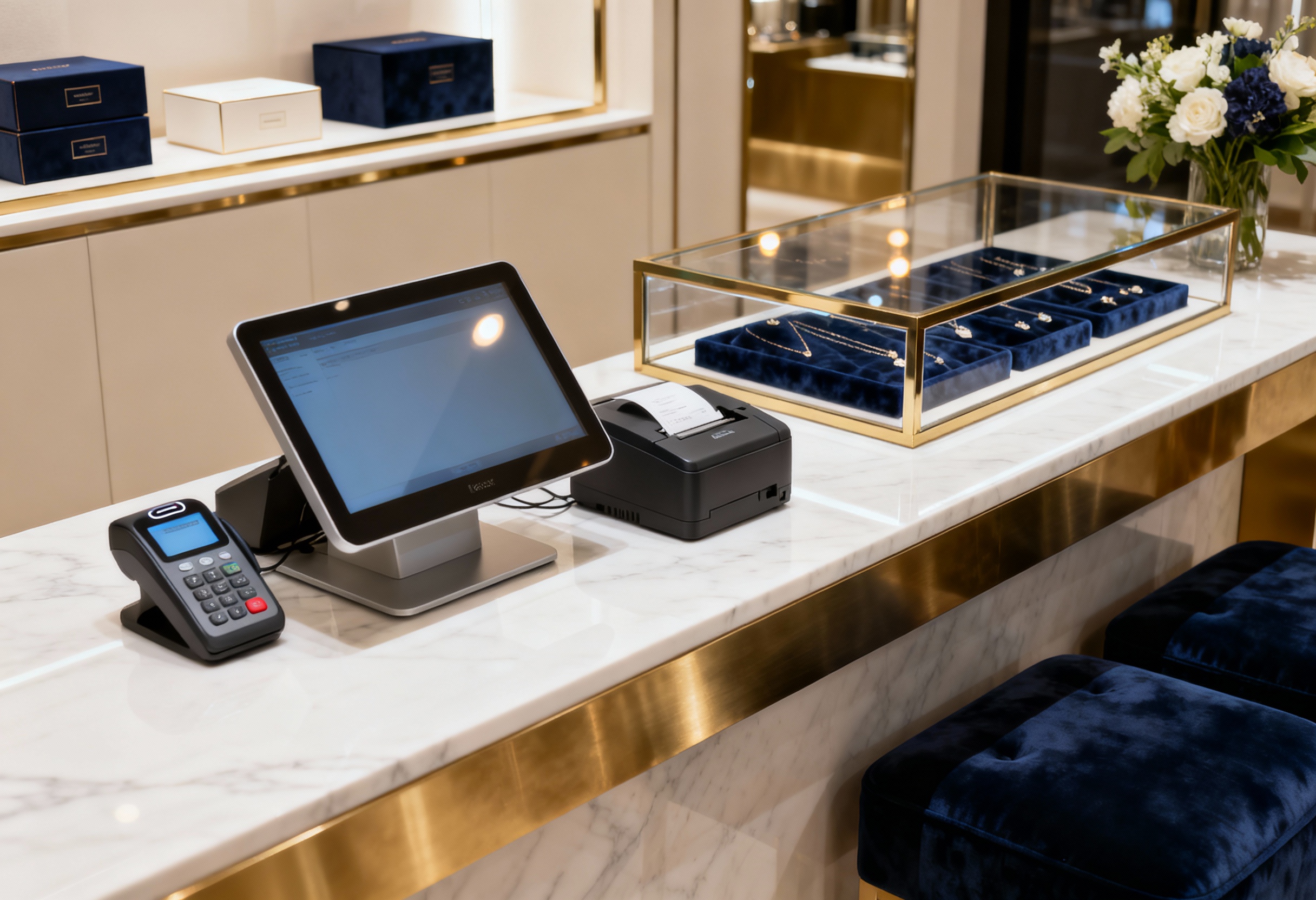The implementation of a robust antique mall point of sale software within an antique mall holds the potential to revolutionize both the operational framework and the customer experience. For antique mall operators, the choice of POS software is not simply a technological upgrade; it is a strategic decision that impacts sales tracking, inventory management, and vendor relations. As antique malls operate in a complex environment with multiple vendors and unique inventory, selecting the right POS system can unlock efficiency and provide the insights needed for long-term success. This guide explores key considerations and best practices for successfully integrating POS software into an antique mall setting.
Highlights:
- The antique mall model brings together multiple independent vendors under one roof, each operating unique booths or showcases with varying rental or consignment agreements.
- A solid POS system for antique malls should support multi-vendor management, flexible commissions, cloud access, vendor portals, and intuitive tools for inventory and checkout.
- Setting up your system involves defining vendors, entering inventory details, customizing tax and receipt settings, and testing hardware to make sure everything runs smoothly from day one.
The Antique Mall Business Model
The Antique Mall business model revolves around providing space where various vendors can display and sell their antique goods. Vendors pay a fee for booth rental, and in some cases, the operator receives a portion of each sale.
This approach creates a diverse shopping environment with different types of items, such as furniture, collectibles, and jewelry. The operator may also curate the products to maintain a high standard and attract customers with unique tastes. Special events, like auctions or workshops, can help increase foot traffic and visibility.
About the general market, the antiques and collectibles sector reveals distinct patterns in store distribution across key regions. The United States holds a dominant position, accounting for 11.91K stores, which represents 52.59% of the total. The United Kingdom follows with 3.61K stores, making up 15.94%, while Canada secures third place with 1.12K stores, representing 4.94% of the overall market.

Although store presence remains strong, online sales within the art and antiques market have faced new challenges. In 2024, total online sales declined by 11 percent compared to the previous year, reaching 10.5 billion U.S. dollars. Despite this contraction, online transaction values continue to outperform pre-pandemic levels, reflecting a structural shift in consumer behavior that continues to shape the industry.
Key Features to Look for in Antique Mall Point Of Sale Software
When selecting antique mall point of sale software, it is important to focus on features that address the unique needs of a multi-vendor environment. The right POS system simplifies operations, improves vendor management, and enhances the customer experience.
- Multi-vendor support: Manage sales, inventory, and commissions across various vendors within a single system.
- Flexible commission settings: Tailor commission structures to suit different vendor agreements, allowing for various fee models.
- Intuitive item entry interface: Simplify the process of adding products to the system, minimizing errors and saving time.
- Cloud-based access and data backups: guarantee data accessibility from any location while securing transaction records with automatic backups.
- Custom receipts with item and booth information: Provide detailed receipts that include information about the item and the vendor’s booth, enhancing the shopping experience.
Vendor portals for real-time sales visibility: provide vendors access to track their sales performance, empowering them to make informed business decisions.
How to choose the Right Antique Mall Point of Sale Software?
Understanding the Unique Needs of Antique Malls
Antique malls involve a variety of vendors selling unique items, each with specific inventory, pricing, and commission structures. An antique mall point of sale software designed for such businesses should allow each vendor to manage their own sales while providing centralized oversight for mall operators. The system should accommodate different product types and guarantee easy tracking of vendor-specific information, preventing confusion in transactions and inventory management.
The system must also cater to the diversity of items, from large furniture to small collectibles, making inventory tracking and sales reporting a key aspect. Detailed product information, such as condition and provenance, should be easily input and accessible to both customers and vendors, enhancing the buying experience and adding value to each transaction.
Comparing Cloud vs. On-premise Solutions
Cloud-based POS systems provide flexibility by allowing access from various locations, making them suitable for businesses with multiple sites or remote sales operations. Cloud systems also eliminate the need for dedicated IT infrastructure, with automatic updates and secure backups minimizing the risk of data loss and reducing the demand on internal resources.
On-premise solutions, on the other hand, provide a higher degree of control over security and data management, which may be preferable for businesses that prioritize these factors. However, these systems typically require larger upfront investments in hardware and ongoing maintenance costs, which may not be ideal for smaller antique malls seeking more cost-effective solutions.
►►► Optimal solution set for businesses: Multi store POS, Next-gen POS, Inventory Management Software (MSI), Self Service, Automation, Backorders
Evaluating Based on Ease of Use, Cost, Support, and Scalability
Antique mall point of sale software should be simple for vendors and staff to use with minimal training. The user interface must support easy product entry, fast transaction processing, and straightforward reporting, reducing the chance of errors and ensuring smooth operations. This ease of use helps improve the overall experience for both customers and employees.
Cost is another important consideration. Cloud-based systems may provide a lower initial cost, but on-premise solutions could incur higher setup costs. Ongoing maintenance, software updates, and technical support must be factored into the overall investment. The software should also scale with the business, accommodating more vendors and expanding capabilities as the antique mall grows.
Setting Up Your Antique Mall POS System: Step-by-Step
Setting up an antique mall point of sale software involves several important steps to configure the system for efficient operation and accurate tracking. Each step, from defining vendors to testing payment processors, plays a role in ensuring smooth business operations for both mall operators and vendors. A structured approach can help make sure the system meets the unique needs of multi-vendor environments while supporting a positive customer experience.
- Define each booth/vendor and assign unique IDs: Assigning an ID to each vendor allows accurate tracking of sales and inventory. This prevents confusion in transactions, helping mall operators and vendors keep accurate records for each booth.
Enter detailed inventory with pricing, descriptions, and other relevant product information: Properly entering product data such as pricing, descriptions, and inventory numbers will help avoid stock discrepancies. This step improves customer transparency and simplifies inventory management for vendors and mall operators. - Customize sales tax and commission settings for individual vendors: Setting up personalized tax and commission rates based on each vendor’s requirements allows the system to handle complex financial transactions. It helps guarantee correct calculations, making the process more straightforward for all parties involved.
- Set up custom receipt formatting and configure tag printers for clear transaction records and product labeling. Customizing receipt templates to display vendor information, product details, and pricing will improve transaction clarity. Setting up tag printers will help maintain proper product identification and make the shopping experience more transparent for customers.
- Test payment processors and hardware connections to guarantee smooth operations: Running tests on payment processors and hardware like barcode scanners and receipt printers before going live will confirm that all systems work properly. This step helps identify and resolve issues early to guarantee reliable transactions and smooth customer service on opening day.
Empowering Your Antique Mall with ConnectPOS
Implementing ConnectPOS as an antique mall point of sale software will simplify managing various vendors, inventory, and commissions. The cloud-based system enables both operators and vendors to access real-time sales data, monitor stock levels, and process transactions from anywhere. This solution supports antique malls in handling day-to-day operations while ensuring that vendors maintain control over their own sales and inventory.
Key Features for Antique Malls:
- Multi-Vendor Management: ConnectPOS handles the management of several vendors under one platform. Vendors have control over their own inventory and commissions, while operators can oversee the entire system and generate reports on sales and transactions.
- Inventory Control: The platform allows vendors to input and manage inventory with detailed descriptions and pricing. Changes are reflected in real time, helping avoid discrepancies and keeping both vendors and customers informed on available products.
- Customizable Pricing and Commission Structures: Vendors in antique malls often need flexibility in pricing and commission rates. ConnectPOS provides a flexible framework that allows operators to customize tax, commission, and pricing settings for each vendor.
- Cloud-Based Access: The system’s cloud functionality enables both vendors and operators to access data and reports from anywhere, making it ideal for antique malls with multiple locations or those needing easy remote access to sales and inventory data.
Integrated Payment Processing: ConnectPOS integrates directly with various payment processors, allowing secure transactions for credit card payments, mobile payments, and cash transactions, all in one system. - Detailed Reporting: The platform generates detailed reports on sales, inventory, and vendor performance, giving mall operators valuable insights to make informed decisions regarding inventory management and overall business performance.
ConnectPOS simplifies operations for antique mall owners and vendors, providing a clear path to improve transaction handling, track sales, and maintain inventory integrity while promoting a better customer experience.
FAQs: Antique Mall Point of Sale Software
What’s the first step in setting up the antique mall point of sale software?
Start by defining your vendors and booths, giving each one a unique ID. Once the booths are set up, enter the inventory details like pricing and product descriptions. Following this, customize sales tax and commission settings for each vendor. This will establish the framework for how transactions and reports will function moving forward.
How do I manage inventory with a POS system in an antique mall?
Each vendor will be able to input their products with descriptions, prices, and stock quantities. The POS system automatically updates the inventory in real time, so both operators and vendors can track product availability, sales performance, and stock levels. This simplifies inventory management and minimizes errors.
How does cloud-based access benefit antique mall owners and vendors?
Cloud access allows both vendors and mall operators to manage inventory, process sales, and generate reports remotely. This is especially helpful for businesses that operate across several locations or need flexibility to access data from various devices. The cloud also ensures that data is backed up and easily retrievable from anywhere.
Conclusion
A reliable antique mall point of sale software serves as the backbone of an antique mall, transforming traditional retail management into a more structured and insightful process. Beyond managing transactions, the right system provides valuable data for inventory optimization, accurate commission tracking, and real-time sales analytics.
For operators and vendors alike, investing in a tailored POS solution creates a foundation for operational excellence, enabling businesses to grow sustainably, foster better vendor partnerships, and deliver a more cohesive and enriching experience for customers.
With ConnectPOS, both operators and vendors can achieve a more streamlined and profitable business structure, ultimately leading to improved customer satisfaction and business growth. Let’s contact us for more consultation.
►►► Optimal solution set for businesses: Shopify POS, Magento POS, BigCommerce POS, WooCommerce POS, NetSuite POS, E-Commerce POS



